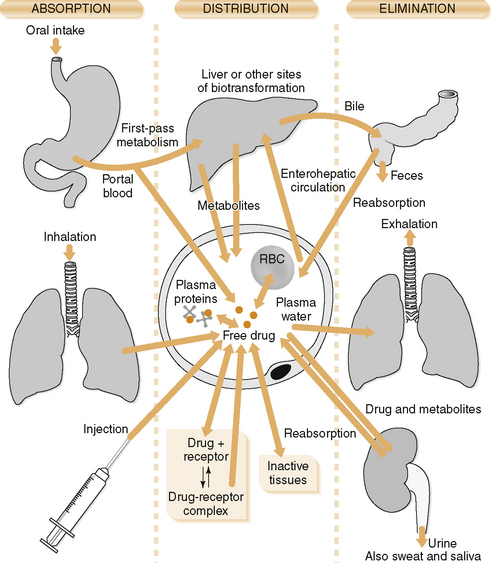A nurse is explaining the activation of beta2 receptors to nursing students during a clinical rotation at the hospital. Which statement by a student demonstrates a need for further teaching?
“Beta2 activation results in bronchodilation.”
“Beta2 activation results in glycogenolysis.”
“Beta2 activation results in vasodilation of skeletal muscles.”
“Beta2 activation results in contraction of uterine muscle.”
The Correct Answer is D
Choice A Reason:
Beta2 activation results in bronchodilation. This is a well-known effect where the activation of beta2 adrenergic receptors in the smooth muscle of the airways leads to relaxation and widening of the airways, making it easier to breathe. This effect is commonly utilized in the treatment of asthma and other respiratory conditions.
Choice B Reason:
Beta2 activation also results in glycogenolysis. This process involves the breakdown of glycogen into glucose, which increases blood sugar levels. This effect is part of the body’s response to stress, providing additional energy for the “fight or flight” response.
Choice C Reason:
Beta2 activation results in vasodilation of skeletal muscles. This means that the blood vessels supplying the skeletal muscles widen, increasing blood flow to these muscles. This effect helps to deliver more oxygen and nutrients to the muscles during periods of increased activity.
Choice D Reason:
This is the correct answer. Beta2 activation does not result in the contraction of uterine muscle; rather, it causes relaxation of the uterine smooth muscle. This effect is beneficial in preventing premature labor by reducing uterine contractions. Therefore, the statement that beta2 activation results in contraction of uterine muscle is incorrect and indicates a need for further teaching.
Nursing Test Bank
Naxlex Comprehensive Predictor Exams
Related Questions
Correct Answer is D
Explanation
Choice A: Excretion
Excretion is the process by which drugs and their metabolites are eliminated from the body, primarily through the kidneys (urine), but also via bile, sweat, saliva, and other routes. While excretion is a crucial phase of pharmacokinetics, it is not directly impacted by the first pass effect. The first pass effect primarily involves the metabolism of a drug before it reaches systemic circulation, which occurs prior to the excretion phase.
Choice B: Metabolism
The first pass effect, also known as first-pass metabolism or presystemic metabolism, significantly impacts the metabolism phase of pharmacokinetics. This phenomenon occurs when a drug is metabolized at a specific location in the body, such as the liver or gut wall, before it reaches systemic circulation. As a result, the concentration of the active drug is reduced, affecting its bioavailability. The liver is the primary site for this metabolic process, where enzymes break down the drug, potentially leading to a significant reduction in its therapeutic effect.
Choice C: Distribution
Distribution refers to the process by which a drug is transported from the bloodstream to various tissues and organs in the body. This phase is influenced by factors such as blood flow, tissue permeability, and binding to plasma proteins. However, the first pass effect does not directly alter the distribution phase. Instead, it affects the amount of drug that enters systemic circulation, which in turn can influence the extent of distribution.
Choice D: Absorption
Absorption is the process by which a drug enters the bloodstream from its site of administration. This phase is crucial for determining the onset of a drug’s action. While the first pass effect occurs after absorption, it does not directly change the absorption phase itself. Instead, it affects the drug’s concentration after it has been absorbed and before it reaches systemic circulation.

Correct Answer is D
Explanation
Choice A Reason:
To determine how much of the medication remains in the body after a certain period, we need to understand the concept of half-life. The half-life of a medication is the time it takes for the concentration of the drug in the bloodstream to reduce by half. For Medication A, the half-life is 3 hours. After 12 hours, which is four half-lives, the amount of medication remaining can be calculated step by step.
Choice B Reason:
Let’s break down the calculation. Initially, the patient receives 400 mg of Medication A. After the first half-life (3 hours), the amount of medication remaining is 400 mg ÷ 2 = 200 mg. After the second half-life (6 hours), the amount remaining is 200 mg ÷ 2 = 100 mg. After the third half-life (9 hours), the amount remaining is 100 mg ÷ 2 = 50 mg. Finally, after the fourth half-life (12 hours), the amount remaining is 50 mg ÷ 2 = 25 mg. Therefore, 375 mg is not a correct answer.
Choice C Reason:
Similarly, 150 mg is not correct. As shown in the detailed calculation, the amount of medication decreases by half every 3 hours. After 12 hours, the remaining amount is 25 mg, not 150 mg. This choice does not align with the half-life calculation.
Choice D Reason:
This is the correct answer. The step-by-step calculation shows that after 12 hours, which is equivalent to four half-lives, the amount of Medication A remaining in the patient’s body is 25 mg. This demonstrates the principle of half-life and how the concentration of a drug decreases over time.
Whether you are a student looking to ace your exams or a practicing nurse seeking to enhance your expertise , our nursing education contents will empower you with the confidence and competence to make a difference in the lives of patients and become a respected leader in the healthcare field.
Visit Naxlex, invest in your future and unlock endless possibilities with our unparalleled nursing education contents today
Report Wrong Answer on the Current Question
Do you disagree with the answer? If yes, what is your expected answer? Explain.
Kindly be descriptive with the issue you are facing.
